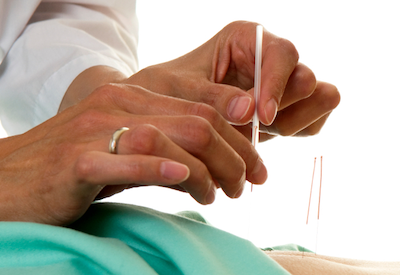Acupuncture theory can seem very complex to the uninitiated, but when it comes right down to it, it is all about balancing energy. In acupuncture, which is an important part of Traditional Chinese Medicine, Kampo, and Korean chimsul, the organs and functions of the body are associated to a series of systems that are mapped on the body as meridians. The vital energy of life, or qi, flows through the body along these meridians, which are grouped into two channels – one which represents the yin, and the other the yang. Acupuncture theory stipulates that pain and sickness are symptomatic of the flow of qi being out of balance or hampered, and the goal of the practitioner is to return this flow to its natural state so the body may remedy itself.
In practice, the acupuncturist interviews and examines the patient in order to discover the root of the problems he or she may be suffering from. Once the practitioner is comfortable with treating the patient, the acupuncturist goes to work with long, hair-thin needles that are carefully inserted into the body along the meridians that will be used to address the qi imbalance. The meridians used depend completely on the type of problem or pain that the patient is suffering from and the manipulation that must be done to the qi.
The Meridians
In acupuncture theory, there are twelve primary meridians and eight secondary. Of the twelve primary meridians, ten are named for organs (and are capitalized to prevent confusion with the organs themselves), while the remaining two are named for functions (the Pericardium and San Jiao). Only two of the secondary meridians have acupuncture points of their own, while the others are manipulated by multiple acupuncture body points in the main meridians. These two secondary meridians are found on the midline of the anterior of the head and trunk, while the primary meridians run vertically along bilateral symmetrical lines through the body.
Each of the twelve primary meridians belongs either to the yin channel or the yang channel, resulting in six of each. On either side of the body, these channels are split between evenly between hand and the foot (resulting in three each on either side).
The yin channels of the hand include the meridians for the Lung, the Pericardium, and the Heart. These begin on the chest and follow the inner arm (mostly along the front) to the hand. The yang channels of the hand include the meridians for the Large Intestine, the San Jiao, and the Small Intestine, which begin on the hand and follow the outer surface of the arm (mostly along the back) to the head.
The yin channels of the foot include the meridians for the Spleen, the Liver, and the Kidney. These begin on the foot and follow the inner surface (mostly along the back) of the leg to the chest or flank. The yang channels of the foot include the meridians for the Stomach, the Gallbladder, and the Bladder, which begin on the face, near the eye, and follow the body on the surface (mostly along the front and side) of the leg to the foot.
Finding Balance
Through the manipulation of these meridians, a practitioner puts acupuncture theory to use through his needles by stimulating points along the meridian. After the needles are inserted, the patient will often e left to rest for some time, with the needles in place, to allow the body to do its work. With the flow of qi modified by the placement of the needles, the body should be able to overcome deficiencies in the flow of qi, or redistribute a surplus. Furthermore, the practitioner’s therapy will help the body restore a natural balance between the yin and yang flows of qi.
In some cases, a single session of acupuncture may be enough to help the body find its balance. However, putting acupuncture theory into practice more often requires several visits, each one continuing to nudge the body in the right direction until it eventually starts holding the balance of qi on its own.

No Comments